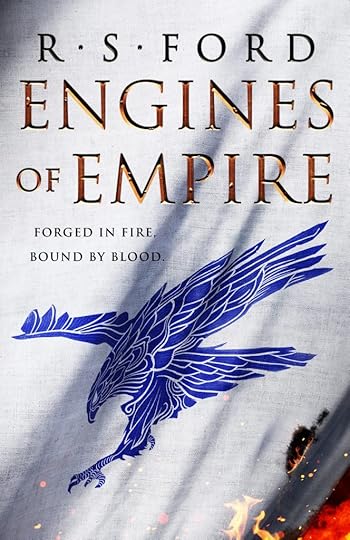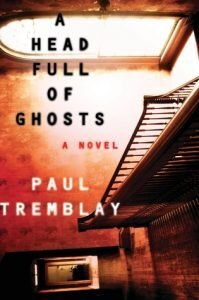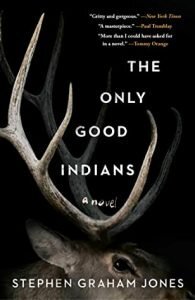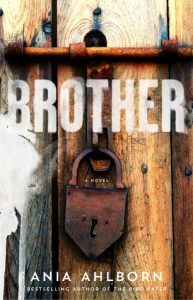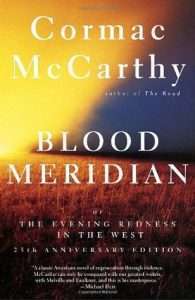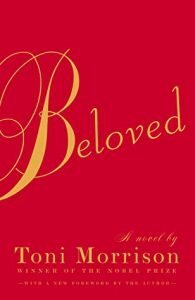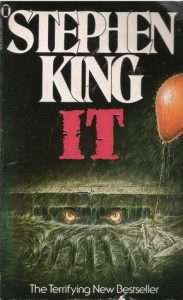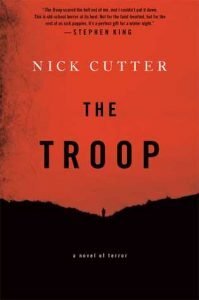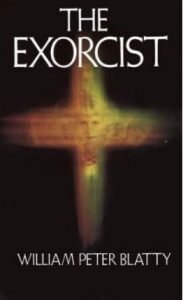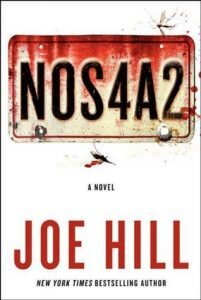Adrian Collins's Blog, page 158
November 2, 2021
REVIEW: Nevernight by Jay Kristoff
I must admit, I am very late to the Jay Kristoff book party. I had bought Nevernight years ago when it was nominated for a Gemmell Award but it had been sitting in the middle of my to-be-read pile since and I had (until recently) always picked up something else instead. The mystical Instagram algorithm suggested Jay Kristoff as someone I might want to follow just before the release of his Empire of the Vampire and I pre-ordered that within minutes of seeing his posts. That tome broke my heart in the way only great grimdark can and has topped my favourite reads of the year. I wanted more. So Nevernight jumped to the top of my reading list and I should have read it years ago; it is a stroke of genius.
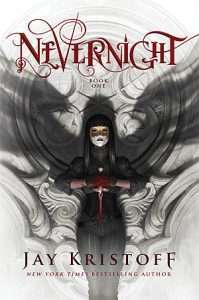 The first of The Nevernight Chronicle trilogy, Nevernight is an embedded story with a currently unknown chronicler writing a biography of the legendry assassin, Mia Corvere. I thought I had worked out who the narrator was, but I was wrong. In fact, every time I thought I had worked out where the plot of Nevernight was going, I was wrong. It was frustratingly brilliant in that way. All that we know about the narrator is that they loved Mia and want theirs to be the ‘true’ account of her escapades. I loved the writing style of having an anonymous omniscient narrator recounting Mia’s tale and a favourite eccentricity in it is the footnotes. Sprinkled around the novel are extra titbits of detail, either about Mia, the history of Kristoff’s world, or just a one liner from the unknown storyteller. I found them fascinating and a distinctive way to world build as it is entirely up to each reader if they take the time to segue in to the footnote and back or not. I have not come across in text references being used this way in a novel before, and it really added to the sense that this was meant to be read as profile of Mia.
The first of The Nevernight Chronicle trilogy, Nevernight is an embedded story with a currently unknown chronicler writing a biography of the legendry assassin, Mia Corvere. I thought I had worked out who the narrator was, but I was wrong. In fact, every time I thought I had worked out where the plot of Nevernight was going, I was wrong. It was frustratingly brilliant in that way. All that we know about the narrator is that they loved Mia and want theirs to be the ‘true’ account of her escapades. I loved the writing style of having an anonymous omniscient narrator recounting Mia’s tale and a favourite eccentricity in it is the footnotes. Sprinkled around the novel are extra titbits of detail, either about Mia, the history of Kristoff’s world, or just a one liner from the unknown storyteller. I found them fascinating and a distinctive way to world build as it is entirely up to each reader if they take the time to segue in to the footnote and back or not. I have not come across in text references being used this way in a novel before, and it really added to the sense that this was meant to be read as profile of Mia.
As well as Nevernight being the first instalment in the record of Mia Corvere’s life, it has a dual narrative within it. The text switches to italics when showing a past experience, and the roman typography indicates the more recent events. In the first chapter I found the timeline jumps jarring, but easily settled in to it and as the novel progresses the switches are more spaced out and feel more natural. Most of the past events being recounted are from Mia’s childhood and her introduction to the cruel realities of her world with the execution of her father and the many ensuing traumas. The narrative up until Mia is in her mid-teens mostly takes place in the city of Godsgrave in Republic of Itreya, which feels like a collision of medieval Venice with canals and masquerades with the political intrigue and military establishment of ancient Rome. As with the dual narrative, the power structure and the religion Kristoff has created took a little getting used to, but this is where I personally found the footnotes very helpful. It gave me the detail I needed to understand the world without lengthy exposition bogging the main text down.
The contemporary timeline follows sixteen year old Mia as she seeks training at the Red Church of Itreya, a boarding school for assassins where the entrance fee is a body part of your choice from a murderer who you have murdered. Lessons include the expected hand to hand combat but also the ‘subtle arts’ of seduction and secrets. If Mia survives her schooling, she will become an anointed initiate in a cult of cold hearted killers and skilled enough to exact her revenge on the corrupt politicians who are responsible for destroying her family. A task that is harder than it seems when not only are many of the lessons potentially deadly, but someone keeps on literally killing off members of the cohort.
Please do not let the scholastic setting, or Jay Kristoff’s other works, make anyone considering Nevernight think it is a young adult novel. Mia may only be sixteen, but she drinks, smokes, swears, has sex, and stabs in vivid detail from the first chapter. This is absolutely an adult grimdark novel and it is unflinchingly graphic in places. I am excited to read the next offering in the trilogy, but I do think that Nevernight can be enjoyed as a standalone novel. It had so many of the things I loved about Empire of the Vampire (no talking sword, but there is a cat made of shadows) and I regret that it took me so many years to pick it up. Jay Kristoff is a master wordsmith and the world of Nevernight and the life of the deliciously flawed Mia Covere is one I look forward to returning to. I thoroughly recommend it. 4/5.
Read Nevernight by Jay Kristoff
The post REVIEW: Nevernight by Jay Kristoff appeared first on Grimdark Magazine.
REVIEW: Hammer and Bolter: A Question of Faith
In A Question of Faith–what I’d consider to be the best episode of Hammer and Bolter so far–Elena and Agatha, the last two Sisters of Battle alive to protect the tomb of the Martyr, wait for the bloodthirsty hordes of Khorne to assault them.
In A Question of Faith they really captured the warrior nun aesthetic of the Sisters of Battle. That quiet contemplation and calmness in the moment of the elder sister, while the younger dreamt of departure and life after, all overshadowed by their losses and impending doom. The quietness of the Martyr despite the stories, and her inaction, just created this excellent sense of the true feeling of the monastic life of the sisters.
The battle scenes in A Question of Faith were excellent, and a big step up from the disappointment of episode 4. The bolter fire on full auto and sword strikes really used all the best parts of the medium to create this wonderful wave of violence I associate with 40k battles.
The khornate leader was a bit silly for my tastes (why always the stupid laughter!?) but the actual charging horde were really cool. A mix of corrupted men and women in a style of mad max and John Carpenter’s Ghosts of Mars. Just brilliant.
Between A Question of Faith and the Battle Sisters game on Oculus VR (which is fun AF, just quietly), I am gaining a new interest in this often overlooked faction. Excellent episode and as always, I can’t wait for the next one.
Watch Hammer and Bolter: A Question of Faith on WarhammerTVThe post REVIEW: Hammer and Bolter: A Question of Faith appeared first on Grimdark Magazine.
November 1, 2021
REVIEW: Jade Legacy by Fonda Lee
I received an advanced review copy of Jade Legacy in exchange for an honest review. Thank you to Fonda Lee and Orbit Books.
I have spent the last month residing in Lee’s spectacularly detailed and wonderfully crafted fantasy world. I’m certain that re-reading Jade City and Jade War prior to starting the mammoth-sized yet never dull Jade Legacy heightened my enjoyment of this entry greatly. In Jade Legacy, Lee has perfectly honed her fantasy and gangster thriller experience with more drama, bloodshed, showdowns, political intrigue, and higher costs. By the end of this novel, we’ve been following some of these characters for almost thirty years, twenty or so of which happen throughout The Green Bone Saga’s final entry.
 The world-building and the magic system (Jade powers) are some of modern fantasy’s finest but it’s Lee’s characters, their dialogues and interactions, and the sublime character development that makes this series such an addictive and memorable read. Favourites include the obvious such as Hilo and Shae but I empathised with Anden’s journey the most. During this novel, he’s of a similar age to me and has gone through disappointment and alienation, to what comes next and finding his own way, place and identity in the world. Although only young children at the end of Jade War, Niko and Ru headline the next generation of characters and have excellent standout moments as they age and mature. Even Bero, who’s always been my least favourite of the point of view perspectives, I found that I had time for and sympathy towards as he rode the highs and lows of luck, presenting the gutter-eye view of events.
The world-building and the magic system (Jade powers) are some of modern fantasy’s finest but it’s Lee’s characters, their dialogues and interactions, and the sublime character development that makes this series such an addictive and memorable read. Favourites include the obvious such as Hilo and Shae but I empathised with Anden’s journey the most. During this novel, he’s of a similar age to me and has gone through disappointment and alienation, to what comes next and finding his own way, place and identity in the world. Although only young children at the end of Jade War, Niko and Ru headline the next generation of characters and have excellent standout moments as they age and mature. Even Bero, who’s always been my least favourite of the point of view perspectives, I found that I had time for and sympathy towards as he rode the highs and lows of luck, presenting the gutter-eye view of events.
Lee has excelled throughout Jade Legacy, solidifying herself as an excellent writer and masterful storyteller. I cried during my lunch break because of a character’s death and had the metaphorical rug pulled out from under my feet on another occasion with a shocking twist of fate that brought to mind The Mountain vs. The Red Viper for the absolute unpredictability of the turn of events. The author takes us through a rollercoaster of emotions. I should have expected this though when a skilled wordsmith presents us almost thirty years of these characters’ lives, creating close affinity, even with players who used to be detested and villainous. There are a lot of changes to the people around the key family, which is akin to reality as it progresses. Work friends change, relationships change or develop, political views and business aspirations may change, there are struggles and sorrows, yet family remains. I believe that is a major theme at the core of this series: love and loyalty, especially to family.
As previously mentioned, I re-read the previous two novels before Jade Legacy as I wanted all the intricacies and details at the forefront of my mind to really appreciate what is presented here. Jade Legacy has as much action and drama as the previous two books combined. I will admit though that at around the 50%-70% mark, I did question where Lee was going with a couple of seemingly peculiar side storylines. The same thing happened as what always seems to when I doubt an author of this class, they all wrapped up in fine fashion and had definite crucial purposes. It took me about a week to finish the final five brilliant chapters as I really didn’t want the Saga to end and was savouring it in my own way. I’ll repeat again that Lee is a fantastic writer and The Green Bone Saga has cemented itself in the top five series that I will recommend when people ask me for the best that I think the fantasy scene has to offer.
Read Jade Legacy by Fonda Lee
The post REVIEW: Jade Legacy by Fonda Lee appeared first on Grimdark Magazine.
October 31, 2021
REVIEW: Midnight Mass
After the brilliant Haunting of Hill House and (the not as great but still good) Haunting of Bly Manor, director Mike Flanagan continues his Netflix horror streak with Midnight Mass, a slow-paced mini-series set on an isolated island where the inhabitants are forced to deal with supernatural events that follow the arrival of a charismatic priest and a young man still dealing with the demons of his past.
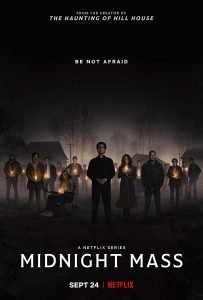 Midnight Mass is absolutely bonkers at times. It’s a show that takes risks in places and follows the predictable path in others. The setting of Crockett Island is a character in itself, as in all the great horror stories, and Flanagan – who directed Stphen King’s Doctor Sleep – displays the influence of King in creating a sinister and unsettling setting with long, slow shots and scenes that would work well on London’s West End as the actors are given time to deliver long monologues and build tenson within the important interactions between the few characters in the series. Riley Flynn (Friday Night Lights Zach Gilford) returns to Crockett Island after time spent in prison for drink-driving and killing a young woman. Drowning in self-doubt and the guilt of his actions, the atheist Riley has to contend with his own demons as the religious town suddenly finds its faith strengthened with the arrival of Father Paul, who is played with charismatic perfection by Hamish Linklater.
Midnight Mass is absolutely bonkers at times. It’s a show that takes risks in places and follows the predictable path in others. The setting of Crockett Island is a character in itself, as in all the great horror stories, and Flanagan – who directed Stphen King’s Doctor Sleep – displays the influence of King in creating a sinister and unsettling setting with long, slow shots and scenes that would work well on London’s West End as the actors are given time to deliver long monologues and build tenson within the important interactions between the few characters in the series. Riley Flynn (Friday Night Lights Zach Gilford) returns to Crockett Island after time spent in prison for drink-driving and killing a young woman. Drowning in self-doubt and the guilt of his actions, the atheist Riley has to contend with his own demons as the religious town suddenly finds its faith strengthened with the arrival of Father Paul, who is played with charismatic perfection by Hamish Linklater.
The religious themes in Midnight Mass aren’t exactly subtle and with that title, why should they be? Forgiveness, guilt, death, redemption: the use of Catholicism brings all these themes together and Flanagan then twists them all into a gothic, vampiric horror designed to unsettle the audience. All the characters in the show are flawed to some extent and facing demons of their own, figurative at first before the final few explosive episodes bring literal demons to fight against. Flanagan uses the series to study the purpose of religion. The characters in the show highlight both the positive and negative aspects of religion, from the strength it gives characters like Riley’s parents as they struggle to move on from their son’s actions, to the way in which devout zealot Bev Keane uses her faith to poison the town and discriminate against any who she deems unworthy. Midnight Mass isn’t afraid to ask big questions and it is Riley’s conversations with Father Paul where the show really shines. Asking things like, “Why does God allow bad things to happen to good people?” gives the series the opportunity to tackle some big ideas and Linklater and Gilford are perfect in their roles during these heavy scenes.
The horror in Midnight Mass is more akin to King’s work and the incredibly underrated Korean film Thirst. Midnight Mass makes you uncomfortable and provides a few jump scares along the way with some blood and gore dotted through before the chaos and action of the final couple of episodes. It is a thoughtful horror mini-series that tries to be something more, something profound. Whether it hits or misses in that aspect is something that will be personal to each viewer but it is clear that Flanagan is an incredibly talented director here working with a cast on top of their game as they attempt something interesting with a story that starts quietly before building to a flaming crescendo.
Midnight Mass is a slow burner that may not be for everyone. This supernatural horror mini-series is dialogue heavy with more of a brain than most series in its genre and just enough blood and gore to keep horror fans happy. Great acting, an unsettling setting, and one of the most terrifying angels you will ever see on screen, Midnight Mass is another brilliant horror from a reliable director.
The post REVIEW: Midnight Mass appeared first on Grimdark Magazine.
October 30, 2021
REVIEW: Temple of the Hyena by Mark Brendan
Unclaimed treasures remain hidden deep within the desert of Egypt. Riches even tomb robbers dare not plunder due to its famed curse. It waits undisturbed until one band of desperate military men acquire its map. Temple of the Hyena by Mark Brendan is a classic tale of treasure hunting. An account of those daring enough to face true evil for the sake of wealth.
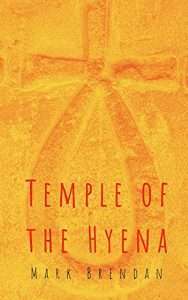 Temple of the Hyena begins right when Napoleon lost the Siege of Acre of 1799. This novella follows the account of Jean-Francois Durand, a surgeon in Napoleon’s army. He is stuck in a never-ending cycle of performing amputations and digging shrapnel out of his comrades only to send them directly back into battle. Jean-Francois is exhausted with war. He is further grieved when he learns his fiancé is gravely ill. Determined to desert the army and start new lives, he and a few others purchase a treasure map. Blinded by the promise of lost treasure, they trek deep into the desert. They must survive the harsh terrain and the ancient nightmare awaiting them.
Temple of the Hyena begins right when Napoleon lost the Siege of Acre of 1799. This novella follows the account of Jean-Francois Durand, a surgeon in Napoleon’s army. He is stuck in a never-ending cycle of performing amputations and digging shrapnel out of his comrades only to send them directly back into battle. Jean-Francois is exhausted with war. He is further grieved when he learns his fiancé is gravely ill. Determined to desert the army and start new lives, he and a few others purchase a treasure map. Blinded by the promise of lost treasure, they trek deep into the desert. They must survive the harsh terrain and the ancient nightmare awaiting them.
Mark Brendan developed an uncomplicated but rather distinctive character in Jean-Francois Durand. Jean-Francois holds his oath as a surgeon to the highest regards. Often, we see his commitment to healing others overriding his orders from the military. His frustration with his grim predicament is telling. I appreciated the care Mark Brendan took in portraying Jean-Francois in his novella. The horrors presented in Temple of the Hyena is amplified because of Jean-Francois’s character.
Mark Brendan’s Temple of the Hyena can be read easily within a quiet afternoon. Brendan’s prose is simplistic, flows naturally, and pairs well with his straightforward story and characters. With less than a hundred pages, Brendan progresses his story by not lingering too much on scenery. I’d argue certain key details had been needlessly sacrificed to speed up the plot. Some parts begged for more tension and build up.
I’ve craved fantasy stories set in Egypt ever since I first watched the 1999’s film The Mummy. I want to feel engulfed by Egypt’s vast desert and inspired by its celebrated pyramids. Temple of the Hyena fell a smidge short in achieving this. I wanted more cultural references and more time exploring Cairo and the actual Temple of the Hyena. Instead, Mark Brendan focuses more on detailing lore and the mysteries in his story. Temple of the Hyena is pleasantly full of creative mythology.
Temple of the Hyena is a return to fundamental story telling. Its plot embodies the oldest adventure; of men fighting monsters. Mark Brendan’s concise and intriguing storyline made for a fast read. I just wanted more from it.
Read Temple of the Hyena by Mark Brendan
The post REVIEW: Temple of the Hyena by Mark Brendan appeared first on Grimdark Magazine.
October 29, 2021
REVIEW: Blindspace by Jeremy Szal
In book two of Jeremy Szal’s increasingly sprawling space opera, The Common, Blindspace ratchets up the scale, the risks, the action, and the relationships to 12. A slower and chunkier book than Stormblood we are given far greater insight into Vakov Fukasawa (Vak), our Reaper with heart, and the workings of the asteroid Compass, and the galaxy spanning Common, and its vast and invasive enemies, and it is one hell of a ride.
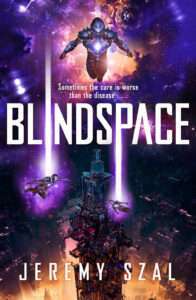 Needless to say, there are some spoilers for book one, herein.
Needless to say, there are some spoilers for book one, herein.
Kicking off with a (much appreciated) 80’s SF-style monologue intro to refresh my memory on book one, Blindspace begins with raid on a House of Suns (a terrorist and drug operation) asteroid crater, with our team trying to kill one of their leaders. Having joined Harmony’s armed forces, Vak’s fireteam are a high-tech group of soldiers much like a SWAT team, going in through the front door to bring down the enemies of Compass, the colossal asteroid mined with cities that is the centre of the galaxy-spanning Common.
After a successful hit that shuts down the House of Suns operations in the crater, but unfortunately misses the actual target, Vak ends up in an impossible position. And he’s put there while the pulped meat of one of Vak’s fireteam is still cooling. The House of Suns have thrown down the ultimate challenge to Vak, his fireteam, and Harmony. And on top of all this, the Shenoi, whose very essence is the addictive, powerful stormtech that slides through every part of Vak to make him a super soldier, are on their way back to “elevate” humanity to a new species—whether the people of the Common want that or not.
The opening half of this book, while still featuring some big and bold action scenes is slower, more purposeful than Stormblood. Szal invests in his character relationships more, and this pays off later in the book as he puts them through the absolute wringer. We spend a lot of time with the fireteam, in much the same way our main character does, and getting to know the backstories and differences between the diverse characters is thoroughly enjoyable. Jasken and Mandy were my two personal favourites.
The far broader scope of Blindspace really showcases Szal’s imagination. There are multiple new levels and areas of Compass to explore, new star systems, species, and even bigger ships. Some of the alien races were a little too tied to Earth mammal species for my usual tastes, but that’s a minor quibble considering how well Szal packs out your imagination with the imagery of his universe.
The emotional impact of choices and the stress on character relationships is really dialled up to 12 in Blindspace. Maybe even 14. At times I felt the point was made, and it was time to move on, but the internal monologue about brotherhood and family would keep going for another half page. There is a very good chance others will enjoy this aspect and be invested to a level I couldn’t, so take that criticism as my personal tastes and with a hefty pinch of salt.
Probably one of the coolest things about this book is the progression of the stormtech through Vakov’s body. Szal’s description of this part-disease-part-drug addiction as it slowly takes over Vakov’s mind and body is just about the highlight of the book for me. The stormtech is almost like a silent, vicious character of its own.
Blindspace is an expansive read, and an excellent follow up to Stormblood. Full of epic battles, high risk actions both physical and emotional, and a real focus on character engagement and relationships, space opera fans are going to find this a thoroughly satisfying book 2 and a great setup for book 3.
Read Blindspace by Jeremy Szal
The post REVIEW: Blindspace by Jeremy Szal appeared first on Grimdark Magazine.
October 28, 2021
EXCLUSIVE: Cover reveal and excerpt for Engines of Empire by R.S. Ford
R.S. Ford is a prolific and brilliant author who you’ve probably read through his Steelhaven series, Black Library’s Warhammer 40,000 book series, and in Grimdark Magazine Issue #4. When I heard about his new book Engines of Empire I was ecstatic to be given the opportunity to reveal the cover and chapter one to GdM fans. A massive thank you to Orbit for giving us this this reveal.
Enjoy!
Blurb for Engines of Empire, book 1 of The Age of UprisingThe nation of Torwyn is run on the power of industry, and industry is run by the Guilds. Chief among them are the Hawkspurs, and their responsibility is to keep the gears of the empire turning. It’s exactly why matriarch Rosomon Hawkspur sends each of her heirs to the far reaches of the nation.
Conall, the eldest son, is sent to the distant frontier to earn his stripes in the military. It is here that he faces a threat he could have never seen coming: the first rumblings of revolution.
Tyreta’s sorcerous connection to the magical resource of pyrstone that fuels the empire’s machines makes her a perfect heir–in theory. While Tyreta hopes that she might shirk her responsibilities during her journey one of Torwyn’s most important pyrestone mines, she instead finds the dark horrors of industry that the empire would prefer to keep hidden.
The youngest, Fulren, is a talented artificer, and finds himself acting as consort to a foreign emissary. Soon after, he is framed for a crime he never committed. A crime that could start a war.
As each of the Hawkspurs grapple with the many threats that face the nation within and without, they must finally prove themselves worthy–or their empire will fall apart.
Cover reveal for Engines of Empire by R.S. FordI absolutely love this cover. With an up close banner standard imagery putting me very much in the military mind of the book, it’s a perfect setup, and I am pretty much certain I’d pick this off the shelf based on cover alone.
Artist credit is Design and Illustration by Mike Heath/Magnus Creative. You can check out more of his work over on his website https://magnuscreative.artstation.com and his Instagram https://www.instagram.com/magnuscreative/.
Chapter oneThe journey from Wyke to the Anvil was over five hundred miles of undulating land. It would have taken longer than two
weeks by wagon, with regular stops and changes of horse. Tyreta Hawkspur would complete the journey in less than three days.
From the viewing deck of the landship she could already see the rising minarets of the Anvil in the distance, growing ever larger as the open fields and rivers glided by. The vessel was elevated on rails, engines growling, the sound bellowing over the wind as it rushed into her face. It was an ingenious feat of engineering. The Hawk- spur Guild had established a network of such lines across the length and breadth of Torwyn, on which the long trains of steel and iron snaked. Tyreta was heir to this legacy, one that had seen the Hawk- spurs rise from simple couriers to one of the most powerful Guilds in the land. It should have made her proud. All she felt was bored.
“Try to look more enthused. Your uncle will have gone to a great deal of trouble to greet us. I’d rather you didn’t look like you’ve just eaten a bag of lemons when we arrive.”
There it was.
Tyreta’s mother, Rosomon, stood at the rail beside her. A constant reminder of what Tyreta was to inherit. Of her responsibilities.
“Oh, there’s a big smile on the inside, Mother,” Tyreta replied.
She said it under her breath, but as usual Lady Rosomon’s hearing was almost preternatural.
“Well, when we arrive, see if you can conjure one on your face.”
Her mother moved away, off to prepare herself to greet the emperor. It wouldn’t do for Rosomon Hawkspur to look anything less than resplendent when she was met by her brother, the great Sullivar Archwind.
As she left, Tyreta contorted her face into a twisted semblance of a smile. It was a pointless act of defiance but at least one she could get away with—Rosomon’s hearing might have been keen as a bat’s, but she certainly didn’t have eyes in the back of her head. As her mother left the viewing deck, Tyreta saw she’d not been quite as discreet as she’d anticipated.
Her elder brother Conall was watching her from across the deck, wearing a mocking grin. He was tall, handsome, sharp-witted, impeccably dressed in his blue uniform—all the things an heir to the Hawkspur Guild should be. Conall never put a foot wrong, in contrast to Tyreta’s constant missteps. He was the future of their line and a captain in the Talon, the military arm of the Guild. All her life she’d been trying to live up to his example and failing miserably. He was the last person she would want to catch her acting like an infant. Well, if her mother and brother thought her so feckless, maybe she’d demonstrate just how talented she was.
Ignoring her brother’s smugness, she moved from the deck and made her way below into the cloying confines of the metal carriage. If the sound was deafening on the viewing deck, it was much worse inside. The roar of the engines resonated throughout the length of the landship, the walls of the carriages trembling with the power of it. Tyreta could feel the energy coursing through the vessel, propel- ling it along the rails. For everyone else on board, she guessed it was just about bearable. For Tyreta it was a drug to the senses.
They were almost at their destination now, the Anvil no more than a few miles away. Surely this was the time to indulge? If her mother chided her, what was the difference? What was the worst that could happen?
Tyreta made her way forward through the carriages. Past the soldiers of the Talon, busy polishing their hawk helms and ceremo- nial blades, past the servants and staff, to the engine room, the head of the snake.
The steel door was shut, a wheel at its centre keeping the engine room locked away from the rest of the landship. Tyreta turned the wheel, hearing the clamps unlock, and swung open the door. She was greeted by the growl of the engine and the hum of the power core within, feeling it nourishing her, energising her.
When she entered, the drivers immediately stood to one side and bowed their heads. There were some advantages to being heir to a Guild.
The men were masked to protect them from the smoke and dust of the engine, but Tyreta ignored the cloying atmosphere as she approached the power core. She could feel its hum, a sweet lament- ing tune sung only to her. Reaching out, she placed a hand on it, sensing the energy emanating from the pyrestones within—those precious crystals pulsating with life.
This was her gift. As a webwainer she could control the pyrestones, imbuing them with life, and at her touch they responded, glow- ing hotter, agitated by her presence. The drivers gave one another a worried look, though neither dared offer a word of complaint.
“Is this the fastest this crate can go?” Tyreta shouted above the din.
One of the drivers pulled down his mask. “It is, my lady. Any faster and we risk—”
“I think we can do better,” she replied.
She pressed her palm to the core and closed her eyes. A smile crossed her lips as she felt the pyrestones respond to her will, the core growing hotter against her palm. The engine whined in protest as the stones urged the pistons and hydraulics to greater effort.
“My lady, this is against regulations,” shouted one of the drivers, but Tyreta ignored him.
The landship began to accelerate. She opened her eyes, seeing through the viewing port that the landscape was beginning to shoot past at an alarming rate. Still she did not yield. Tyreta wanted more. She pressed the core further, communing with it, talking to it in a silent whisper, urging it to greater and greater effort. This was what her webwainer gift was for, and for too long she had been forbidden to use it. What did her mother know anyway? Lady Rosomon had never experienced the privilege of the webwainer talent. This was Tyreta’s right—and besides, what harm could she do?
The landship bucked, the wheels momentarily sliding on the rails. She glanced across the cab, seeing abject terror on the drivers’ faces. Before she could release her hand, there was a yell behind her.
“Tyreta!”
She snatched her hand from the core as though she’d been bitten, turning to see her mother’s furious face in the doorway. The train immediately slowed, the rattling and bucking relenting as the land- ship slowed to its former speed.
Lady Rosomon didn’t have to say a word. Tyreta removed herself from the engine room, moving back through the carriages and past the chaos she’d caused. Baggage had fallen from the securing rigs, garments and trinkets were scattered about the floor. The Talon sol- diers were picking themselves up from where they lay, their arms and armour strewn all about.
Tyreta reached her cabin and closed the door, resting her back against it and breathing heavily. There might be a price to pay for this later. Lady Rosomon had never been a tolerant woman. What- ever that price was, Tyreta thought as a smile played across her lips, it had been worth it.
The rest of the journey was mercifully short and without inci- dent. Tyreta considered it best not to push her luck, and she dressed as one might expect of an heir to the Hawkspur Guild, her blue tunic displaying the winged-talon sigil on her chest. Despite the tai- lored fit, it still felt as if it were throttling her, but it would be best to endure it for now. At least until her mother had a chance to cool down. As the landship pulled to a stop, Tyreta couldn’t keep herself locked away any longer.
Lady Rosomon was waiting for her when she debarked. On her right stood the imposing figure of Starn Rivers, swordwright to the Hawkspur Guild. He was a bull of a man, thick moustache droop- ing down past his chin. Tyreta had never liked him or the looks he occasionally gave her, and the fact that he barely spoke was a small mercy.
While their cortege was busy unloading the landship and Conall joked with his cronies from the Talon, Rosomon led the group up through the terminal. Once out beyond the great arched entrance, Tyreta could see the city proper.
The Anvil was a testament to the power of the Guilds. Soaring towers clamoured for space, linked by raised walkways. Every- thing stank of opulence, and even the lowliest of the citizenry were adorned in fine silk and velvet. A thunderous rattle peeled down from overhead as a skycarriage rumbled by on its elevated tracks. Tyreta marvelled at the perfect union of artifice and architecture, conveying people from one side of the city to the other with such automotive efficiency.
It was a short walk to the main promenade, at the end of which stood the magnificent Archwind Palace. The way was lined with statues that crossed the Bridge of Saints, prominent members of the Guilds from the annals of history given pride of place along the Anvil’s main thoroughfare. Between those icons stood an honour guard of giant stormhulks, pistons hissing as their vast mechani- cal frames suddenly stood to attention. Each was piloted by a webwainer—someone who could manipulate pyrestone and instil life in the huge engines. For a moment Tyreta felt a pang of envy— what a privilege to control an invention of such power—but her focus was quickly taken by the palace, rising up in the midst of the city like a vast mountain.
As they crossed the bridge, Tyreta saw that a reception party was already awaiting them. She could make out Sullivar standing front and centre, his red uniform of office pristine, breastplate of brass shining in the sun. Her uncle had recently proclaimed himself emperor of Torwyn—an affectation Tyreta found a little ridiculous. Sullivar might look the part, but it was widely known he fell far short of being the great ruler her grandfather Treon had been.
Before they reached the foot of the vast stairway that led up to the palace, Tyreta caught up with her mother.
“Just wanted to say—” she began.
“Not now,” Rosomon snapped. “But I thought I’d—”
Her mother cut her off with a glance, and Tyreta thought it best not to push it, moving back and letting Lady Rosomon lead the way once more. Maybe it would be wise to let her calm down a little more before trying for an apology again.
When they’d almost reached the stairs, Sullivar could hold him- self back no longer. He walked down the last few steps, hugging Rosomon to him in a bearlike embrace.
“It’s been too long,” he said to her.
“Indeed it has,” she replied, smiling through the indignity.
“And you brought my niece and nephew,” he said, opening his arms to hug Tyreta.
She embraced her uncle, feeling his perfumed beard soft against her cheek. Sullivar squeezed her a little too tightly, crushing her against the cog sigil embossed on his breastplate, but there was little she could do to stop it. Once he’d released her, Conall reached for- ward to shake Sullivar’s hand, but he too was met with a bear hug.
“Lady Oriel,” Rosomon said, bowing before Sullivar’s wife, who had come to join them. “Or should that be Empress?”
“Nonsense,” Oriel replied, taking Rosomon’s hand and lead- ing her up the stairs. “We are family. No need for such affectations between us.”
They might have been sisters by marriage, but the difference between them was stark. Where Oriel was dazzling in a gown of red and gold, her hair tied up in an intricate bunch fastened with elabo- rate pins, Rosomon wore a skirt and cloak of plain blue, brown hair falling straight and unadorned about her shoulders.
Tyreta followed them up to the palace, passing the heavily armoured Titanguard who lined their route. Each one was a behe- moth, glaive in hand, bulky armour powered by ingenious artifice. She noticed there was no sign of Lancelin Jagdor, swordwright of the Archwind Guild, but then it was best if that man didn’t show his face in front of the Hawkspurs. But Lancelin wasn’t the only one conspicuous by his absence.
“Where’s Fulren?” Tyreta asked.
“Your younger brother wanted to come and greet you,” said Sul- livar. “But he is busying himself in his workshop. He has almost made a breakthrough with his studies, so I am told.”
“He always was dedicated,” said Rosomon, glancing momentarily at her daughter.
Tyreta bristled at the insinuation. Her younger brother couldn’t even be bothered to come greet them, yet still he was lauded. Once again she was reminded who the favourites were.
“He’s been a great asset,” said Sullivar. “His skills have improved beyond measure. You should go see him at work, Tyreta,” he added. She was about to protest, but a look from her mother made her realise she should probably do as she was bid. Best not to push things too far, considering she had still to face her punishment for toying with the landship.
As Rosomon and Conall were led away through the palace by Sullivar and Oriel, Tyreta was taken by a sullen-looking footman down into the bowels of the huge building. Here were foundries by the dozen, smelting works, rows of benches upon which artifi- cers worked on minuscule inventions. The farther down she got the more the place stank of industry—oil and rust permeated the air, the heat of the forges making the atmosphere sticky. Tyreta felt the essence of the pyrestones that lay all about, making her tingle right to her fingertips.
The footman led her to the lowest level. A door stood ajar at the end of the corridor, and the servant stopped, beckoning Tyreta inside. She pushed the door open to see a small workshop. It was in disarray, spare parts of machinery lying all about, and in the centre of the room, hunched over a workbench, was her brother Fulren.
“Hello, Tinhead,” she said to his back.
“Hello, Ratface,” he replied, without turning around.
She walked toward him, picking up some piece of artifice from a bench. It looked intricate, wires and pins protruding from every surface. Tyreta had no idea what it was for.
“Too busy playing with your toys to greet our beloved mother?” “I’ve been busy,” he said. “I’m sure she’ll forgive me.”
“For you, Lady Rosomon would forgive anything.”
Fulren turned to face her. On his head was strapped a contraption that supported a lens over one eye to magnify his work. He would have looked every inch the artificer—studious, serious—were it not for the fact that he was broad about the shoulders and lean about the waist. A fighter in body, inventor in mind. The perfect combination of skill and intelligence. She couldn’t help but resent him for that.
“I’m sure she’s forgiven you plenty,” he said. “How was the journey?”
“Let’s just say it could have gone more smoothly.”
Fulren flashed her a toothy grin. “Just can’t stay out of trouble, can you, Ratface? You’re supposed to be the responsible one.”
“I’m older than you. That’s pretty much where my responsibility ends.”
“Not for long,” said Fulren.
And he was right. Though Conall was to inherit their Guild’s title and obligations, Rosomon had demanded that Tyreta also take on the responsibilities of the Hawkspur Guild. Conall would see to military matters, and Tyreta would be in charge of transporta- tion all across Torwyn—by air, land and sea. She would administer trade routes and supply chains and keep her nation moving. It was a daunting prospect, and one she would gladly delay for as long as possible.
“No,” Tyreta said. “It won’t be long. I’m to travel to the Sundered Isles after the reception. Mother thinks it will build character.”
“So soon?” Fulren seemed genuinely concerned. “I won’t see much of you, then.”
“You’d see more if you came with me. We could do this together.
You could take up Father’s mantle yourself. You could—”
“We’ve been over this a thousand times. My place is here.” He gestured to the junk that lay strewn all around him. “Uncle Sullivar has granted me an apprenticeship. I am to become a master artificer. It’s all been settled.”
“So I’m doomed then?”
Fulren laughed at that. “You’ll just have to live up to your respon- sibilities for once. Who knows, maybe you’ll like it. You’ll get to see the world.”
The prospect of that did excite her, but thinking on the burden of controlling an entire Guild only filled her with dread.
“What about you?” she asked. “Are you going to live out your days cooped up in here, playing with your toys?”
“Who knows? Maybe I’ll get to see the world too, one day.”
Tyreta glanced around the windowless workshop, then shook her head. “Not you. You’ll never leave this place.”
“Thanks for the vote of confidence.” He winked at her. “Anyway, get lost, I’m busy.” With that he turned back to his machinery.
“See you at the reception, Tinhead,” she replied before she left him to his labour.
The footman was still waiting for her outside, and Tyreta asked to be taken to her chamber. It had been a long journey, even for her. Obediently the servant led her back up through the vast work- shops until they reached ground level. There they took the elevator, steam pumping and gears grinding until it had juddered all the way to the upper levels of the palace. As she followed the open walk- way toward her chamber she could see out onto the vast city. Huge stormhulks walked the streets, but they looked tiny from the heady heights of Archwind Palace. Not even the highest spires of Wyke could rival this place for majesty.
When finally she opened the door to her chamber, Tyreta was brought back to earth with a crash. Her mother was waiting patiently inside, her back to the door as she gazed from the window.
Tyreta closed the door, shutting herself in, bracing for what was coming.
“Mother, I—”
“We won’t speak of it,” Rosomon said.
That was unexpected. Tyreta had prepared herself for a tirade fol- lowed by yet another lecture on responsibility and duty to the Guild. Rosomon turned from the window. Her hands were clasped in front of her, face a mask of calm. She was far from the raging harpy that usually manifested after one of Tyreta’s frequent misdemeanours. “Your first public engagement is coming.” She gestured to the bed, where lay a dress in the deep blue of the Hawkspur Guild. “You’ll wear that. You’ll fix that.” Rosomon pointed at Tyreta’s hair, which, as usual, was worn up in a messy knot on top of her head. “And you’ll do your best to act in a manner befitting an heir to the Guild of Hawkspur.”
Tyreta wasn’t sure what was worse—her mother’s raging or her clinical orders.
“Of course,” she replied. This was no time for defiance. “And, if you wish, you can wear this.”
Rosomon opened up her hand. In her palm was a silver pendant inlaid with a single gem. Tyreta recognised the nightstone immedi- ately. It was the rarest of pyrestones, one that was useless for artifice but valued for its beauty nonetheless.
“Mother, I don’t deserve—”
“No, you don’t,” said Rosomon. “But it was your father’s and you should have it.”
She took the pendant from her mother’s hand. Tyreta had never been one for jewels or trinkets, but the fact that it had been her father’s made it more precious than anything she had ever owned. She was about to thank her mother, to tell her she would do better from now on and live up to her father’s legacy, but Lady Rosomon was already on her way through the door.
“And don’t be late,” Rosomon said before closing the door behind her and leaving Tyreta alone.
She held the pendant in her hand for a moment, feeling the night- stone cold against her palm. It could not be imbued with any power, could not be used for any practical purpose, and yet she suddenly felt more connected to it than she had to any pyrestone. She would wear it with pride.
Glancing down at the gaudy blue dress, she realised there was other attire she would just have to get used to.
Pre-order Engines of Empire by R.S. Ford
The post EXCLUSIVE: Cover reveal and excerpt for Engines of Empire by R.S. Ford appeared first on Grimdark Magazine.
October 27, 2021
The Top 10 Scariest Books According to A Horror Lover
Reading has been a major part of my life ever since I learned how to do it. As a timid, unadventurous, introvert, immersing myself in fictional worlds satisfies my need to try new things. It’s also an important escape mechanism when life gets overwhelming.
My sister and I were talking on the phone the other day and she was telling me how these last twenty months or so, she has sought comfort in watching romantic comedies and lighthearted books. I told her for me it has been the opposite, horror stories have served an even greater role as my distraction of choice.
I told her that anything more bleak and terrible than my American pandemic life has been a comfort. On days when I couldn’t think of anything worse than our reality, I could turn to the fictional lives of characters going through something much, much worse. In March of 2020, I read whole horror books in one day as an alternative to “doom scrolling” on social media or watching endless news reports.
Horror fiction has always been an important part of my life but is especially meaningful to me now. It’s an incredible honor to share this list of horror books that have truly scared me and made a lasting impact on my horror-loving heart.
A HEAD FULL OF GHOSTS by Paul TremblayDemon possession is a horrifying concept. The idea is that a purely evil entity takes control of one’s body and mind. In the case of A Head Full of Ghosts, a young woman appears to be possessed based on her behavior, but is she? This book had me up too late at night and checking on my teenage daughter at the time to make sure she wasn’t scaling the walls or levitating off her bed.
The blurbThe lives of the Barretts, a normal suburban New England family, are torn apart when fourteen-year-old Marjorie begins to display signs of acute schizophrenia.
To her parents’ despair, the doctors are unable to stop Marjorie’s descent into madness. As their stable home devolves into a house of horrors, they reluctantly turn to a local Catholic priest for help. Father Wanderly suggests an exorcism; he believes the vulnerable teenager is the victim of demonic possession. He also contacts a production company that is eager to document the Barretts’ plight. With John, Marjorie’s father, out of work for more than a year and the medical bills looming, the family agrees to be filmed, and soon find themselves the unwitting stars of The Possession, a hit reality television show. When events in the Barrett household explode in tragedy, the show and the shocking incidents it captures become the stuff of urban legend.
Fifteen years later, a bestselling writer interviews Marjorie’s younger sister, Merry. As she recalls those long ago events that took place when she was just eight years old, long-buried secrets and painful memories that clash with what was broadcast on television begin to surface—and a mind-bending tale of psychological horror is unleashed, raising vexing questions about memory and reality, science and religion, and the very nature of evil.
See our review for Head Full of Ghosts Here
Read A Head Full of Ghosts by Paul Tremblay
A visually graphic, disturbing tale about grief, revenge, regret, and belonging. There are scenes in this book that are forever burning in my mind like neon signs with no off switch. I distinctly remember closing the book to go to bed but I was haunted by the word Stephen Graham Jones planted in my head. I will never, ever forget the way this book made me feel.
The BlurbFrom New York Times bestselling author Stephen Graham Jones comes a novel that is equal parts psychological horror and cutting social commentary on identity politics and the American Indian experience. Fans of Jordan Peele and Tommy Orange will love this story as it follows the lives of four American Indian men and their families, all haunted by a disturbing, deadly event that took place in their youth. Years later, they find themselves tracked by an entity bent on revenge, totally helpless as the culture and traditions they left behind catch up to them in a violent, vengeful way.
See our review for The Only Good Indians Here
Read Only the Good Indians by Stephen Graham Jones
A family in rural Appalachia is responsible for countless girls that go missing every year. The whole family is deeply involved in their traditions except Michael. He doesn’t enjoy what he has been asked to do by his relatives. I read this book straight through, my heart pounding in my chest and my eyes racing over Ahlborn’s words. Truly terrifying and heartbreaking.
The blurbDeep in the heart of Appalachia stands a crooked farmhouse miles from any road. The Morrows keep to themselves, and it’s served them well so far. When girls go missing off the side of the highway, the cops don’t knock on their door. Which is a good thing, seeing as to what’s buried in the Morrows’ backyard.
But nineteen-year-old Michael Morrow isn’t like the rest of his family. He doesn’t take pleasure in the screams that echo through the trees. Michael pines for normalcy, and he’s sure that someday he’ll see the world beyond West Virginia. When he meets Alice, a pretty girl working at a record shop in the small nearby town of Dahlia, he’s immediately smitten. For a moment, he nearly forgets about the monster he’s become. But his brother, Rebel, is all too eager to remind Michael of his place…
Read Brother by Ania Ahlborn
Perhaps not traditionally marketed as horror but this is horror all the same. A teenage runaway joins a gang of “Indian hunters” during the 1800s. The book details their depravity. I’ve never read a more depraved, utterly unhinged novel in my life. Pitch black dark and bleak from beginning to end. Judge Holden is the stuff of nightmares. A human monster.
The blurbAn epic novel of the violence and depravity that attended America’s westward expansion, Blood Meridian brilliantly subverts the conventions of the Western novel and the mythology of the “wild west.”
Based on historical events that took place on the Texas-Mexico border in the 1850s, it traces the fortunes of the Kid, a fourteen-year-old Tennesseean who stumbles into the nigh
Read our review here.
Read Blood Meridian by Cormac McCarthy
This book shook me to my core. Even though they are simplistic, I have a visceral reaction to seeing the cover or the title. This book scarred me. A woman named Sethe is haunted by the ghost of her oldest daughter who goes by the name, Beloved. Sethe is consumed by her and the presence of the ghost costs Sethe her earthly relationships and ultimately her sanity. A truly haunting story about the psychological horrors of slavery. An unrelenting, emotional, gut-wrenching horror story.
The blurbIt is the mid-1800s and as slavery looks to be coming to an end, Sethe is haunted by the violent trauma it wrought on her former enslaved life at Sweet Home, Kentucky. Her dead baby daughter, whose tombstone bears the single word, Beloved, returns as a spectre to punish her mother, but also to elicit her love. Told with heart-stopping clarity, melding horror and beauty, Beloved is Toni Morrison’s enduring masterpiece.
Read Beloved by Toni Morrison
I was tempted to go with THE SHINING or PET SEMETARY for my King choice because they are shorter and tighter stories but they didn’t scare me the way IT did. This book hits the reader in the guts from every angle. Human monsters that prey on children, an ancient demon taking the form of a variety of nightmares that preys on children, and children that prey on other children who are different. King goes straight for his readers’ emotions so that he can exploit that concern when he throws his characters down the gauntlet. It’s the best.
The blurbWelcome to Derry, Maine. It’s a small city, a place as hauntingly familiar as your own hometown. Only in Derry the haunting is real.
They were seven teenagers when they first stumbled upon the horror. Now they are grown-up men and women who have gone out into the big world to gain success and happiness. But the promise they made twenty-eight years ago calls them reunite in the same place where, as teenagers, they battled an evil creature that preyed on the city’s children. Now, children are being murdered again and their repressed memories of that terrifying summer return as they prepare to once again battle the monster lurking in Derry’s sewers.
Readers of Stephen King know that Derry, Maine, is a place with a deep, dark hold on the author. It reappears in many of his books, including Bag of Bones, Hearts in Atlantis, and 11/22/63. But it all starts with It.
Read IT by Stephen King
I had to have a body horror/creature-feature book on this list as well as celebrate one of my personal favorite horror writers, Nick Cutter. This book is disgusting. If you haven’t read it, fear the potential for throwing up your lunch if you decide to give it a spin. This isn’t to say the graphic nature of this book is just shock value, it’s not. Cutter intricately and expertly plans this terror from page one. Just a group of kids and their scout leader on an isolated island with nothing to do but save themselves from parasites and each other. It’s brutal.
The blurbOnce every year, Scoutmaster Tim Riggs leads a troop of boys into the Canadian wilderness for a weekend camping trip—a tradition as comforting and reliable as a good ghost story around a roaring bonfire. But when an unexpected intruder stumbles upon their campsite—shockingly thin, disturbingly pale, and voraciously hungry—Tim and the boys are exposed to something far more frightening than any tale of terror. The human carrier of a bioengineered nightmare. A horror that spreads faster than fear. A harrowing struggle for survival with no escape from the elements, the infected…or one another.
Part Lord of the Flies, part 28 Days Later—and all-consuming—this tightly written, edge-of-your-seat thriller takes you deep into the heart of darkness, where fear feeds on sanity…and terror hungers for more.
Read The Troop by Nick Cutter
The movie terrified me so much as a pre-teen, I decided I would never read the book. As an adult and a seasoned horror reader, I finally decided it was time to face my fear and pick it up. My hunch was correct: This book is fucking scary. As a mother, it hits hard. I can’t imagine what it would feel like to watch your child get ravaged by a demon with literally no hope of doing anything about it except invite a couple of priests to perform an exorcism. I was surprised by the spiritual battle aspects of this story that is not as prevalent in the film. It made this so much more than just a horror book.
The blurbOriginally published in 1971, The Exorcist is now a major television series on FOX. It remains one of the most controversial novels ever written and went on to become a literary phenomenon: It spent fifty-seven weeks on the New York Times bestseller list, seventeen consecutively at number one. Inspired by a true story of a child’s demonic possession in the 1940s, William Peter Blatty created an iconic novel that focuses on Regan, the eleven-year-old daughter of a movie actress residing in Washington, D.C. A small group of overwhelmed yet determined individuals must rescue Regan from her unspeakable fate, and the drama that ensues is gripping and unfailingly terrifying.
Two years after its publication, The Exorcist was, of course, turned into a wildly popular motion picture, garnering ten Academy Award nominations. On opening day of the film, lines of the novel’s fans stretched around city blocks. In Chicago, frustrated moviegoers used a battering ram to gain entry through the double side doors of a theater. In Kansas City, police used tear gas to disperse an impatient crowd who tried to force their way into a cinema. The three major television networks carried footage of these events; CBS’s Walter Cronkite devoted almost ten minutes to the story. The Exorcist was, and is, more than just a novel and a film: it is a true landmark.
Purposefully raw and profane, The Exorcist still has the extraordinary ability to disturb readers and cause them to forget that it is “just a story.” Published here in this beautiful fortieth anniversary edition, it remains an unforgettable reading experience and will continue to shock and frighten a new generation of readers.
Read The Exorcist by William Peter Blatty
A kick-ass female protagonist, “Vic” has supernatural abilities and is trying to protect her son from a demonic child killer who resides in Christmasland. The child-killer employs garbage, human monster, Bing Partridge to supply his need for orphans. I love the way this horror story jumps back and forth in time and narratives. It’s complex, intricately plotted, and compelling. One of my favorite books of all time.
The blurbVictoria McQueen has an uncanny knack for finding things: a misplaced bracelet, a missing photograph, answers to unanswerable questions. When she rides her bicycle over the rickety old covered bridge in the woods near her house, she always emerges in the places she needs to be.
Charles Talent Manx has a gift of his own. He likes to take children for rides in his 1938 Rolls-Royce Wraith with the vanity plate NOS4A2. In the Wraith, he and his innocent guests can slip out of the everyday world and onto hidden roads that lead to an astonishing playground of amusements he calls Christmasland. The journey across the highway of Charlie’s twisted imagination transforms his precious passengers, leaving them as terrifying and unstoppable as their benefactor.
Then comes the day when Vic goes looking for trouble…and finds her way to Charlie. That was a lifetime ago. Now, the only kid ever to escape Charlie’s evil is all grown up and desperate to forget. But Charlie Manx hasn’t stopped thinking about Victoria McQueen. On the road again, he won’t slow down until he’s taken his revenge. He’s after something very special—something Vic can never replace.
As a life-and-death battle of wills builds, Vic McQueen prepares to destroy Charlie once and for all—or die trying.
The NOS4A2 by Joe Hill
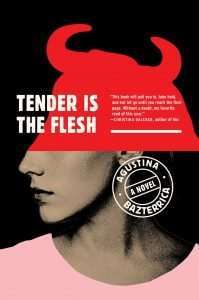
This is the story of a dystopian universe where animals have become toxic to humans. All animals. Zoos are shut down. We can’t have our pets. They are no longer safe for consumption. Somewhere along the way, we breed ourselves for meat. We eat “special meat”–humans raised in captivity for our consumption. Bazterrica centers the story around one man navigating this horrific landscape and there’s no way to anticipate what ultimately happens. Shocking and disturbing because it feels prophetic.
The blurbHis wife has left him, his father is sinking into dementia, and Marcos tries not to think too hard about how he makes a living. After all, it happened so quickly. First, it was reported that an infectious virus has made all animal meat poisonous to humans. Then governments initiated the “Transition.” Now, eating human meat—“special meat”—is legal. Marcos tries to stick to numbers, consignments, processing.
Then one day he’s given a gift: a live specimen of the finest quality. Though he’s aware that any form of personal contact is forbidden on pain of death, little by little he starts to treat her like a human being. And soon, he becomes tortured by what has been lost—and what might still be saved.
Read Tender is the Flesh by Agustina Bazterrica
The post The Top 10 Scariest Books According to A Horror Lover appeared first on Grimdark Magazine.
REVIEW: See S2
In one of the coolest, most visually appealing, and different pieces of SF I’ve watched in a while, See S2 really ramps up the scale of risk, the family drama, and the intense stupidity of Baba Voss and Magra’s children. Needless to say, herein lie spoilers for S1 (seriously, back the F away if this is going to impact your experience).
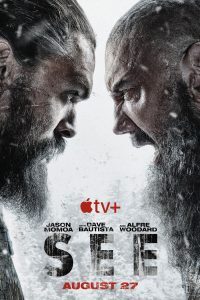 In See S2 Baba Voss enters the city of Trivantes to rescue his adopted daughter. His hulking, brutal, but kind of big hearted (to those he loves–see the family resemblance?) brother, Edo Voss, is waiting. Princess Magra tries to offset her sister’s growing madness as the queen throws body after body in the way of her great lie, silencing dissenters and starting wars with the militarily superior Travantes. Magra is also the start of the reintegration of the sighted into the world after 500 years of society treating them as heretics to be burned, though if those sighted play any part other than soldiers for the men and breeders for the women remains to be seen.
In See S2 Baba Voss enters the city of Trivantes to rescue his adopted daughter. His hulking, brutal, but kind of big hearted (to those he loves–see the family resemblance?) brother, Edo Voss, is waiting. Princess Magra tries to offset her sister’s growing madness as the queen throws body after body in the way of her great lie, silencing dissenters and starting wars with the militarily superior Travantes. Magra is also the start of the reintegration of the sighted into the world after 500 years of society treating them as heretics to be burned, though if those sighted play any part other than soldiers for the men and breeders for the women remains to be seen.
This seismic shift in ideologies as the blind in power start seeing the benefits the sighted bring to their own conquests and start to try to re-shape the population’s theology around what can help them grasp and maintain power is a key theme this season. The sighted are popping up on both sides, and the impact they have on both militaries is massive—though the sighted under Edo seem to be used with far greater intelligence than those fighting under Baba Voss. A second major theme is between the two Voss brothers. They’ve been away from each other for what seems a lifetime, they’ve grown into wildly different men, and their different perspective on something from their past has the two deadliest warriors in the land on a collision course of epic proportions.
While See S2 is visually stunning with amazing choreography to continue the beautiful look and feel of this series established in See S1, there are a few things that really dragged this show down. For starters, and I reiterate my spoiler warning here, two characters that should have stayed dead at the end of last season did not die, and honestly, I feel a little robbed. Those character deaths landed, and it felt cheap to see them back on the screen.
Then, the son Kofun just drove me absolutely mental. I recognise the young kid making stupid decisions is a trope used to drive danger and tension and plot, but it was Haniwan in S1, and then she tagged in Kofun for S2, and I found myself sitting there hoping one of them would just get killed or have an intelligent thought so they stop being annoying and start creating interesting plot movement for their character arcs.
The ending scenes could also probably be telegraphed a mile off, robbing them of the emotional impact they should have had. They tried to jump on the Game of Thrones boat, stepped off the pier, and landed in the water.
Now that I’m done being a Negative Nathan, let’s talk about all the good See S2 manages. A sprawling story, plenty of lying and event perspective impacting the characters and story, massive battlescenes, a bitter landscape with even more bitter and broken people, and Jason Momoa and David Bautista absolutely smashing it on screen alongside Hera Hilmar, Alfre Woodard, and Sylvia Hoeks.
There’s plenty to be annoyed about in See S2, but in this reviewer’s opinion, there is plenty more to be excited about to tip the scales back in the right direction. I am crossing everything that See gets a season 3.
The post REVIEW: See S2 appeared first on Grimdark Magazine.
October 25, 2021
An Interview With Author Zoje Stage
Pittsburg native and former filmmaker Zoje Stage is a USA Today and international bestselling author of Baby Teeth, Wonderland and now her newest release Getaway. A story where two sisters, Imogen and Beck, and a long-time friend Tilda are hiking in the majestic Grand Canyon’s backcountry. “But as the terrain grows tougher, tensions from their shared past bubble up. And when supplies begin to disappear, it becomes clear secrets aren’t the only thing they’re being stalked by.”
Zoje was kind enough to interview with Grimdark Magazine about her penchant for horror and suspense, writing, and Getaway.
 [GdM] What kind of stories inspired you to become a writer? And if it wasn’t a story, what was your journey here?
[GdM] What kind of stories inspired you to become a writer? And if it wasn’t a story, what was your journey here?
[ZS] For decades my dream was to be a writer/director of independent films. At the time, I believed that film was the medium that encompassed all of my interests: writing, photography, theatre, etc. Unfortunately, due to finances and health issues, I never achieved in film what I’d hope to do. At the end of 2012 I made the difficult decision to leave my film aspirations behind and see if I could learn to write novels. The kinds of books I write are very similar to the types of movies I wanted to make, with stories that delve into interesting facets of human behavior amid a situation or setting where something weird is going on—naturally or supernaturally. A lot of my creative motivation is in exploring how people react to the strangeness going on around them.
[GdM] You have heavy film and screenplay experience. How does your background affect how you craft scenes for novels? Do you approach them visually? Do you storyboard? What is your process?
[ZS] I still think quite visually, and often an idea for a novel will start with an image or two. It was very challenging when I first switched from filmmaking to writing novels as I had to learn how to create an image entirely with words, while understanding that everyone imagines things differently. It helped that long before I was a filmmaker I wrote poetry, so I had some experience with using language expressively. Now I rather enjoy the challenge of figuring out how to translate the mood, setting, imagery that I see in my head using only the precision of sentences.
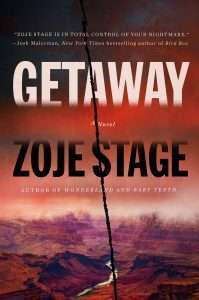 [GdM] Your first two novels, Baby Teeth, and Wonderland have supernatural elements to them? Do you find it easier to write a world where the world’s rules are changeable i.e., ones with supernatural elements or ones grounded entirely in reality?
[GdM] Your first two novels, Baby Teeth, and Wonderland have supernatural elements to them? Do you find it easier to write a world where the world’s rules are changeable i.e., ones with supernatural elements or ones grounded entirely in reality?
[ZS] I find it much harder to write a world that’s grounded in reality. With Getaway in particular I tried to adhere to the specific geography of the trails and places I named in the Grand Canyon. This necessitated conforming my plot elements to what was physically possible given the terrain. Sometimes it’s a constructive challenge to have certain kinds of restrictions—it can help you stay focused. But I really love the freedom of letting my imagination run wild, which is likely why I’ve always been attracted to writing genres like horror and fantasy.
[GdM] Your stories have various horror aspects, whether psychological, supernatural, or suspense. Do you read horror novels? And if so, what scares you?
[ZS] I’d say my greater passion is for the various ways that suspense resides in a novel, and I read more thrillers and psychological stories than straight horror. I definitely like my horror to “ring true” (no matter how fantastic it may seem): I like to see characters realistically grappling with their situation. I’m pretty hard to scare, and when a book scares me it’s usually moments of off-kilter creepiness.
[GdM] Do you find writing a therapeutic outlet?
[ZS] I’ve maintained for a long time that writing is how I process the world. I swear sometimes I don’t know what I truly feel or think about something until I have a chance to sit down and write about it.
[GdM] Having released two novels amidst the pandemic, Wonderland released in 2020 and now Getaway in 2021, how has the experience of releasing differed as an author from that of Baby Teeth in 2018?
[ZS] Releasing books during a pandemic has been very difficult, on multiple fronts. There’s the business aspect: people are not necessarily as plugged into things like new book releases as they once might have been, and are concerned about their finances in a changing world. With Baby Teeth I was just getting the hang of making public appearances as an author…and then it all came to an end. Virtual events are wonderful in certain ways, but I often end up feeling quite disconnected. In many ways it feels like Wonderland, especially, was released into a black hole. My sense of these books being “published” doesn’t feel completely real, although this time around I’ve gotten to see Getaway in a number of bookstores (always a thrill!).
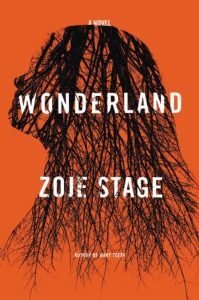 [GdM] Has the pandemic had any effect on your ability to be creative?
[GdM] Has the pandemic had any effect on your ability to be creative?
[ZS] It’s been a very strange year and a half, to say the least. Like many people, my ability to concentrate was impaired for quite a while and I was more inclined to write short pieces—poetry, essays, short stories. I am back to work now, though I still experience bouts of existential malaise. Everything seems very uncertain, which makes it hard to feel grounded and in a solid, safe place. Writing is always the thing that keeps me sane, but it takes a bit more willpower now.
[GdM] In an interview from a few years ago, you mentioned in jest that people won’t know who someone is as a writer until their third book. You went on to say, Baby Teeth has a very internal story with tight relationships. Wonderland has a very strong external element, but your third book has very tight relationships within an external environment. This brings me to the question about your third, recently released book, Getaway. Can you tell me a bit about it?
[ZS] Getaway is about a trio of thirty-something women (two of them sisters) who have been friends since high school. Over the years life and distance have pulled them in different directions and their bonds with each other are fraying. Worse, our hero Imogen has experienced some life traumas that make it increasingly hard for her to function well in the world. Her sister devises a Grand Canyon backpacking trip in an effort to help the three of them get re-connected, and hopes the magnificent environment will help Imogen heal. But soon into their adventure they meet someone very unfortunate, and their vacation goes awry.
On the surface, Getaway looks like an adventure thriller, but I think it’s equally a tale of psychological suspense. The characters find themselves in a situation that tests every ounce of their physical and moral resolve and because Imogen perceives herself as small and weak, her survival strategy becomes more internal and psychological.
[GdM] I read your inspiration for a Getaway was a camping experience with your family as a child. Can you elaborate on that?
[ZS] Getaway, indeed, has its origins in an odd encounter I had with my family on a backpacking trip in the Grand Canyon. We were in a remote area called Salt, where one party at a time was permitted to camp. I was in my teens, and in my emotionally-colored memory of it a haggard fellow appeared out of nowhere, wearing a pistol in a hip holster.
My dad and sister remembered it more accurately: he wasn’t carrying a gun, but he did mention that he’d recently gotten out of prison and was just “wandering around.” He also remarked that, upon crossing paths with a lone female ranger, he realized he could’ve picked up a rock and bashed her in the head and no one would ever know.
Needless to say the incident at Salt stuck with me through the years, as it marked the first time that being in nature carried a hint of human danger. After that, I was always more paranoid, especially when it was just me and my sister camping somewhere deserted, off-season. In my family’s story, the man walked on. Getaway explores the “what if” of a trio of backpackers who aren’t so lucky.
[GdM] Getaway doesn’t fit into any category or genre. There are elements of relationship discussion and familial strife, dealing with psychological turmoil, psychological suspense, survival, and even horror. Do you think that genre labeling is helpful for authors or a hindrance?
[ZS] For better or worse, I don’t think about genre when I write. While I endeavor to write dark and suspenseful books, more specific labels feel very restrictive to me. Labels exist primarily for marketing reasons—who is the audience, where is the book going to be shelved—but I think it affects how some readers approach a book. For instance, some readers have biases toward certain genres and won’t read things that are labeled in categories they believe they don’t like. On the flip side, some readers have extremely specific ideas about what a label like “horror” should mean, and if a book doesn’t conform to that they may be disappointed. For both of these reasons I always wince a little when my books are labeled, but I guess “dark and suspenseful” isn’t an official genre.
[GdM] In the prologue of Getaway, we meet Imogen and her experience with a shooting that happened in a Jewish Synagogue in Pittsburgh. Many of the feelings that Imogen experiences, “What could I have done?” and survivor’s guilt, is felt by victims of traumatic experiences. Imogen’s experiences wrang with authenticity. Did you do any specific research into this particular type of PTSD?
[ZS] I have experienced a very different sort of trauma than Imogen’s but because of my own experience it was important to me to create a character who was complex and relatable. As part of my own effort to understand trauma it was very helpful to read Waking the Tiger by Peter A. Levine. I do truly believe that as sensitive beings in a violent and uncertain world most—if not all—of us are living with trauma, even if we don’t realize it. I believe society itself is a product of trauma, and the more we damage our world and each other the more prevalent trauma becomes.
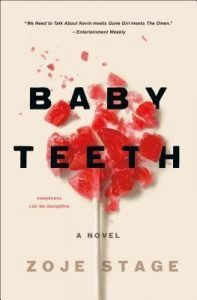 [GdM] I know that you are from Pittsburgh, specifically the Squirrel Hill neighborhood that had a similar shooting at the Tree of Life congregation in 2018. Is your connection to this area the source of inspiration for this prologue?
[GdM] I know that you are from Pittsburgh, specifically the Squirrel Hill neighborhood that had a similar shooting at the Tree of Life congregation in 2018. Is your connection to this area the source of inspiration for this prologue?
[ZS] It is. The Tree of Life shooting took place just blocks from my then-apartment. It was a very shocking and frightening morning, made even more memorable by having a Baby Teeth event to go to, which I’d considered canceling (but didn’t). I felt the repercussions of that incident in my neighborhood for months and months afterward. There were reminders in every storefront window: posters of the names of everyone who’d been killed; Stars of David dangling from every tree and parking meter. It was both poignant and hard to see all the time.
[GdM] The locations and scenes in Getaway play a more significant role than just as a space that characters move through, often seen in novels. They almost seem like they are characters themselves. Was that intentional? Or, was that how the writing evolved because you described something that had to be incredibly difficult to explain?
[ZS] The setting of everything I write is an integral part of my books. Baby Teeth would feel completely different if Suzette didn’t obsessively clean her already perfect prison of a house. Wonderland needs not just the isolation of the family’s new Adirondacks home, but the beauty and danger that manifests in extremely wintry conditions. Getaway picks up on those wilderness themes—beauty and danger—but in the context of being so deep in the Grand Canyon’s desert backcountry that the characters can’t consider any survival strategies beyond their own wit. The place they’d come for a back-to-nature vacation becomes hostile territory, almost an inescapable fortress. I think by necessity—and by its inherent awesome presence—the Grand Canyon feels very “alive” in this book, and even when the characters feel trapped and afraid they’re never unaware of the beauty around them.
[GdM] Can you tell us a bit about the other characters in the novel? We meet Imogen in the prologue, but who are the other characters who will share this journey with Imogen?
[ZS] Imogen’s life has made her somewhat paranoid and cautious, but she has a rich imagination—which Beck and Tilda think she relies on too much. Beck, Imogen’s older sister, lives a stable life with her equally successful wife. Imogen would describe her sister’s need to “fix everyone” as annoying, but it’s probably why Beck became a physician. Their friend Tilda was always a bit of a showwoman, so her life path took her from doing high school musicals to auditioning for American Idol. She’s made a career as a motivational speaker and influencer. At one point while writing Getaway I realized I’d chosen career paths for my three women where they were each basically their own boss. There is another character…but for the sake of avoiding spoilers I will let readers discover that on their own.
[GdM] Familial relationships are significant in Getaway, both born of blood and those relationships that happen when a friend becomes lifelong family. Do you think the mental growth and mending these characters had at the end of the story could have been achieved had the trip gone on without a hitch?
[ZS] Absolutely not. If everything had gone according to plan, perhaps Imogen and Tilda would have developed some new respect for each other—and then they would’ve gone right back to their old ways. I’ve thought a lot over the years about the impact of difficult situations—how soldiers bond on the battlefield. It can be true even for less traumatic circumstances, such as an arduous backpacking trip that goes according to plan. But part of what we do as novelists is put our characters through the worst things they can endure, to test their inner resolve in the hopes of learning something vital about themselves. Part of the magic of a book is that evolution can be experienced in condensed time, whereas in real life we’re learning and changing over a span of years.
[GdM] To hearken back to a previous question about getting to know a writer through their books? What is on the horizon for you? What can you say about your next novel?
[ZS] I believe come 2022 readers will get to see my first published novella, called (at least for now) The Girl Who Outgrew the World. As a dark yet whimsical fairy tale it’s a little “off brand” for me, but it is dear to my heart. It’s about an eleven-year-old girl, Lilly, who has an inexplicable growth spurt. When her father and doctors decide to take drastic action to curb her dangerous growth, Lilly runs away—and embarks on a journey to discover her true self. In the spirit of fairy tales, the story works on two levels and TGWOTW is also a parable for how patriarchy reacts to and treats, the female body.
I’ve also recently finished a new novel, but it’s at a delicate stage at the moment so I can’t say too much about it except that it’s an adult mother/daughter story, very psychological, a little batshit crazy.
[GdM] Are you reading something exciting right now? I had heard that you loved Survivor Song by Paul Tremblay. I, too, cried when I read it as well as Cabin at the End of the World. They are gut-punches of novels.
[ZS] I love both of those novels! I’ve read some great books this year—Cackle by Rachel Harrison, Don’t Look For Me by Wendy Walker, Dark Things I Adore by Katie Lattari, Rovers by Richard Lange. At the top of my reading pile right now are These Toxic Things by Rachel Howzell Hall, and The Last House on Needless Street by Catriona Ward.
Read Getaway by Zoje Stage
The post An Interview With Author Zoje Stage appeared first on Grimdark Magazine.


